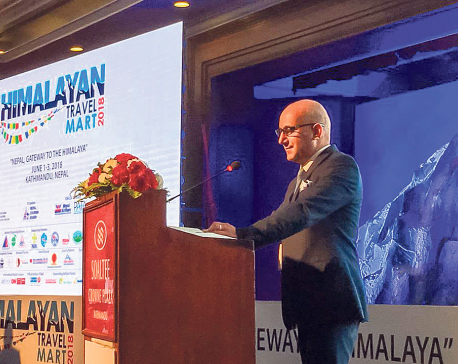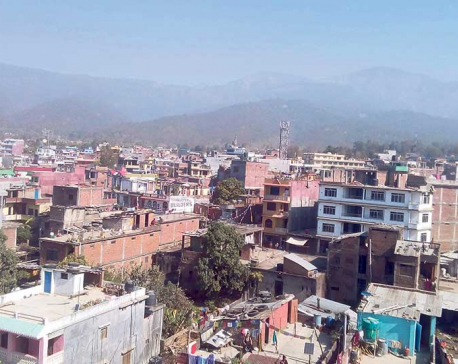
OR
Universal health coverage
Universal health coverage of all Nepalis is a brilliant idea. It appears realistic too. Since 2012, the government has been piloting the scheme in three districts—Ilam, Kailali and Baglung—to great success. The success of the pilot program is the reason it is being expanded to 25 districts this year, with the goal of covering all 75 districts within three years, as announced by Finance Minister Bishnu Paudel in his recent budget speech. As per the model, each family will have to pay a monthly premium of Rs 2,500 in return for which it will be eligible for treatment worth Rs 50,000 should one of the family members fall sick. Since the state has already heavily subsidized treatments of nine major health aliments—heart disease, kidney-related disease and cancer among them—it means that no Nepali will be deprived of healthcare. This will be the case since the government will also pay the premiums of the families living below the absolute poverty line, the elderly, the disabled and even those who were displaced by last year's earthquakes.
This is terrific news. It, however, does not mean that the road to universal healthcare for all Nepalis will be free of challenges.
Perhaps the biggest of them will be to ensure that there are enough doctors and medicines in the outskirts of Nepal. Many Nepalis are currently being deprived of timely treatment as they have to travel to big cities—if not to Kathmandu—for such treatment. So even if the treatment is free, they still have to spend a lot on transportation and hotel. Therefore, ensuring there are enough qualified doctors in at least the 14 zonal hospitals will be vital for the success of the scheme. This won't be easy. More than half of all doctors in Nepal are Kathmandu-based; most of the rest practice in other major cities like Birgunj and Biratnagar.
The only way to make sure these regional health centers are well-staffed is through a mandatory provision whereby every medical student in Nepal has to serve in rural areas for at least a couple of years. Offering cash and other incentives to coax them out of their urban holdouts have not been very successful. The same with the medicines; the lengthy procurement process of regional medical repositories must be significantly shortened.
These are not small challenges. But they should not distract from the enormous impact even a partial success of the universal health insurance will have. Whatever its other demerits, a program that offers promises affordable healthcare to each and every Nepali is worth persisting with. So it would be unfortunate if this noble initiative was discontinued by future governments. But the chances of that happening are slim as no political party would want to be seen as an obstacle to good health of their constituents.
So, yes, the road ahead for the universal health coverage might be bumpy. But each such bump will also provide invaluable clues on how to tweak the program right. The age of universal healthcare for Nepalis has begun; this is something to celebrate in a country where good news have been scarce of late.
You May Like This

Himalayan Travel Mart 2018 kicks off
KATHMANDU, June 2: With the theme 'Nepal, Gateway to Himalaya', 3-day-long Himalayan Travel Mart 2018 kicked off in Kathmandu on Friday. Read More...

US national jumps off hospital's sixth floor, dies
KATHMANDU, April 3: John Parmak, 52, presumed to be a US citizen, had made two unsuccessful suicide attempts while in immigration... Read More...

Province level trade, tourism and agro fair kicks off
SURKHET, Feb 10: The 'Province level Trade, Tourism and Agro Festival-2074' has kicked off in Province-6 temporary capital, Birendranagar, on... Read More...




Just In
- Kushal Dixit selected for London Marathon
- Nepal faces Hong Kong today for ACC Emerging Teams Asia Cup
- 286 new industries registered in Nepal in first nine months of current FY, attracting Rs 165 billion investment
- UML's National Convention Representatives Council meeting today
- Gandaki Province CM assigns ministerial portfolios to Hari Bahadur Chuman and Deepak Manange
- 352 climbers obtain permits to ascend Mount Everest this season
- 16 candidates shortlisted for CEO position at Nepal Tourism Board
- WB to take financial management lead for proposed Upper Arun Project






_20220508065243.jpg)








Leave A Comment